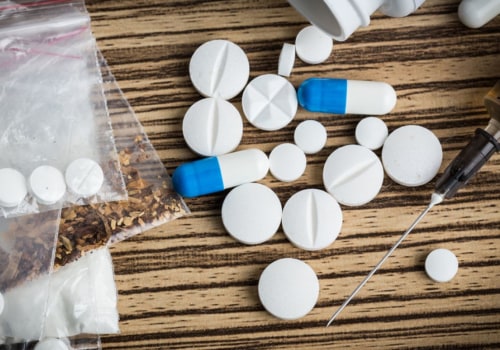Medication is any substance, other than food, used to prevent, diagnose, treat, or alleviate the symptoms of an abnormal disease or condition. Drugs can also affect the functioning of the brain and the rest of the body, causing changes in mood, consciousness, thoughts, feelings, or behavior.
Psychopharmaceuticals
are substances that, when ingested or administered into the system, affect mental processes such as perception, awareness, cognition or mood and emotions. Psychoactive drugs belong to a broader category of psychoactive substances that also include alcohol and nicotine. The use of psychotropic drugs without medical supervision is associated with significant health risks and can lead to the development of drug use disorders.These disorders, especially when left untreated, increase morbidity and mortality risks for individuals and can cause significant suffering and deficiencies in personal, family, social, educational, occupational, or other important areas of functioning. Drug use disorders are associated with significant costs to society due to lost productivity, premature mortality, increased health care spending, and costs related to criminal justice, social welfare and other social consequences. A study to prevent deaths from opioid overdose shows promising results and improving prevention and treatment of drug use disorders was discussed at the Third WHO Forum on Alcohol, Drugs and Addictive Behaviors (FADAB) Meeting of Technical Experts on Public Health Responses to Cannabis Use. The revised edition incorporates the results of field tests. The drug definition for children (entry 2 of the medical definition of medication) is also included. A drug, or pharmaceutical product, is a substance used to prevent or cure a disease or condition or to alleviate its symptoms.
In the United States, medications can be taken orally, through a skin patch, by injection, or through an inhaler. A drug can also refer to an illegal or restricted substance that people use for recreational purposes or to get high. The development of new and improved drugs is a complex and expensive business in the United States. Some of the largest U. S.
corporations such as Johnson & Johnson, Pfizer, Merck and Eli Lilly are dedicated to researching, testing, manufacturing and marketing new drugs. In addition, biotechnology has evolved in recent years as an important new branch of the drug business. Biotechnology companies focus on research and development (R&D) of new cures based on genetic manipulation. Major players in the field include Amgen, Gilead Sciences and Celgene Corp. In the United States prescription drugs must be approved by the Food and Drug Administration (FDA).
The agency's Drug Evaluation and Research Center (CDER) acts as a consumer watchdog. In the development and discovery phase researchers explore new possibilities. They can investigate the unexpected effects of existing drugs; test new molecular compounds; or create new technologies that allow drugs to act differently in the body. In the preclinical research phase when a potential new drug is identified researchers determine the correct doses and methods of administration; side effects; interactions with other drugs; and efficacy. They also study the absorption; metabolism; and excretion characteristics of the drug. In the clinical research phase; the company first analyzes the substance in the laboratory or in vitro; and sometimes on animals or in vivo.
Depending on the result; the drug can be tested on human subjects in clinical trials to determine if it is safe and effective. The phase 1 clinical trial or study is the first phase of the long and exhausting drug approval process. While its main objective is to establish the safety profile of the investigational drug; these studies also allow for collection of vital information about its effects; chemistry; doses; methods of administration; side effects; interactions with other drugs; efficacy; absorption; metabolism; excretion characteristics; etc. Phase 2 focuses on drug efficacy while phase 3 trials are used to compare treatment with established treatments for a medical problem. A phase 4 follow-up that analyzes effects on population can be carried out once it has been approved by FDA. All phases only begin after pharmaceutical companies' extensive research & development phase (R&D); which can be lengthy & costly. A drug that overcomes this obstacle is sent to CDER for review.
The agency employs pharmacologists; chemists; statisticians; doctors & other scientists who carry out an independent & impartial review of drug & documentation submitted with it. This process usually takes 6-10 months to complete & if CDER determines that benefits outweigh risks then company may sell drug & is responsible for monitoring reports on drug efficacy & unforeseen side effects. A brand-name drug can be patented for 20 years after its discovery/invention & once patent expires other manufacturers can produce & market generic equivalents. Generic equivalents are increasingly being prescribed as they become available in US due to their relatively low cost. Generics must have same medicinal ingredients & therefore same therapeutic effects to receive FDA approval for sale as substitutes. The price of prescription drugs is a source of great financial stress for many Americans & has become one of biggest political problems today. Health insurance prevents many Americans from burdening most retail drug prices although coverage varies widely. In any case drug costs are major factor in increase in health insurance premiums & it is important for people to understand how drugs are developed & approved before they are available for sale.






